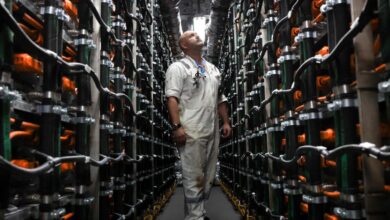Malaysia Artificial Intelligence Nexus 2024 program marks country’s move toward AI

Keen to explore a range of use cases for artificial intelligence (AI), Malaysia has announced the launch of a national initiative designed to probe the viability of integrating the technology into the local economy.
The recently launched Malaysia Artificial Intelligence Nexus 2024 program is seen as an attempt by the central government to occupy a leading position in Southeast Asia for all things AI. The program is intricately linked with the setting up of a Faculty of Artificial Intelligence (FAI) at the Universiti Teknologi Malaysia (UTM).
The program, a brainchild of UTM and the Ministry of Higher Education (MOHE), attracted several key industry players, policymakers, and academics working on ideas for the future of AI in the country.
Speakers at the one-day event discussed watertight regulations for AI, risks associated with the technology, and the economic benefits stemming from a wholesale embrace of the technology. In his keynote address, MOHE lead executive Zambry Abd Kadir hinted at future integrations in education, agriculture, social systems, and the digital economy.
“AI poses the greatest challenge of the 21st century, yet it also presents the most wonderful, inspiring, and hopeful opportunity for us all,” said Kadir. “We stand prepared to collaborate with any agencies to achieve our objectives in AI technology.”
The program is expected to overlap with other Malaysian agencies currently exploring AI but faces the steep challenge of falling down. At the start of 2024, Malaysia’s prime minister gave the nod for the launch of a self-learning online program to boost public understanding of AI.
Administrators followed up the online program by unveiling an AI Talent Roadmap targeting 2030 as a tentative date to deepen the talent pool for AI firms keen to set up shop in the country. In a strong show of commitment, the country also announced the Malaysia-Artificial Intelligence Consortium (MAIC) to foster industry collaboration among key players.
“We aspire to give back to our country, community, and the industries that form the backbone of our beloved country,” said Kadir. “Through the integration of embedded AI into crucial sectors like agriculture, healthcare, national defense, industrialisation, and human-centric endeavors, we aim to make a significant impact.”
Rather than competing with existing programs, the Nexus project will serve as a conduit for relevant agencies to work on ideas to extend AI’s footprint across Southeast Asian country.
Embracing emerging technologies
In June 2023, Malaysia struck a partnership with China to explore cross-border blockchain-based applications in payments. The partnership will extend to joint research projects between both nations, exploring novel blockchain and AI applications across several industries.
“We expect that the synergistic combination of AI and blockchain technology will lead to breakthroughs that greatly enhance the efficiency and security of cross-border trade,” UM lead researcher Dr. Saaidal Razalli Azzuhri said.
Plans for a central bank digital currency (CBDC) have reached high levels, and the country is keen on replicating the success of policing digital assets for the AI ecosystem.
In order for artificial intelligence (AI) to work right within the law and thrive in the face of growing challenges, it needs to integrate an enterprise blockchain system that ensures data input quality and ownership—allowing it to keep data safe while also guaranteeing the immutability of data. Check out CoinGeek’s coverage on this emerging tech to learn more why Enterprise blockchain will be the backbone of AI.
Watch: Blockchain is the backbone of AI & IoT—here’s why
New to blockchain? Check out CoinGeek’s Blockchain for Beginners section, the ultimate resource guide to learn more about blockchain technology.




